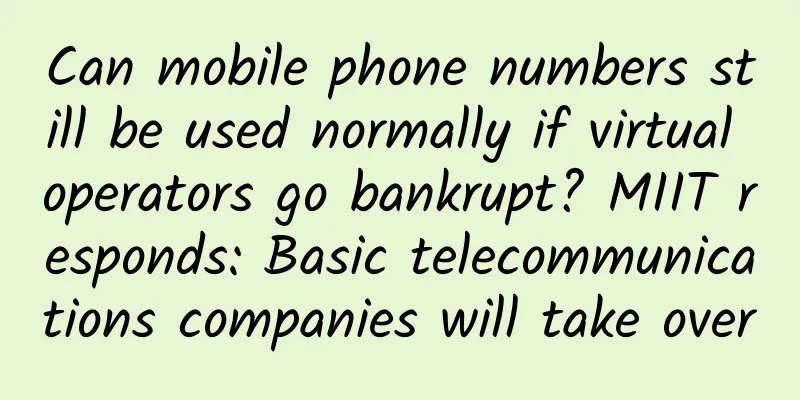Is 5G connectivity the future of IoT?

|
The three major US mobile operators AT&T, T-Mobile and Verizon plan to shut down their 3G networks in the next 18 months. T-Mobile will reportedly cancel its CDMA 3G network around January 1, 2022 and its UMTS 3G network in April 2022, six months later than originally planned. AT&T said it will shut down its 3G service in February, while Verizon will hold out the longest and has set its sights on December. 2G and 4G networks will still exist for quite some time. Regardless of the timeline, these (and many other global mobile operators) attribute the decision to the rise of 5G and their own buildout of 5G-connected networks. The rollout of 5G now seems inevitable, and that could be a good thing, and not just for consumers who want to watch all that delicious high-definition Vimeo content without buffering. From retail and smart building managers to Industrial IoT (IIoT) and supply chain businesses, IoT vendors are eager to deliver all the benefits to every end user without any of the downsides. There are many skeptics out there who think we don’t need 5G yet, are unsure about the economics and costs involved in building out the infrastructure and bandwidth usage, and think it will only work in very rare cases, if at all. They can either keep up or be left behind; it seems as the avalanche of 5G installations and initiatives around the world will only add to the momentum. Let’s take a look at some of the recently announced 5G connectivity expansions and installations, shall we? (Note: this is not an exhaustive list.) 5G ExpansionSpainAccording to recent reports, Spain is ready to award spectrum in the 26 GHz band, the last band to be allocated and which will have explicit provisions for the provision of 5G. According to a recent announcement by Roberto Sánchez, Spain’s Secretary of State for Telecommunications and Smart Infrastructure, it looks like the awards will be made between now and early 2022. In July, Telefónica, Vodafone and Orange bought 700 MHz from the Spanish government for a combined $1.3 billion. The government also confirmed that each license would be valid for 20 years, with a maximum of 40 years. BrazilTelefónica isn’t stopping at Spain, either. Enterprise IoT Insights recently reported that Telefónica will begin rolling out 5G in Brazil in October, with all national operators in the country having been required to begin 5G work within 12 months. Brazilian Telefónica brand vivo is reportedly investing billions of dollars each year in technology and innovation projects to promote 5G and artificial intelligence. AustraliaTelstra recently announced that it will deploy Ericsson's cloud-native dual-mode 5G Core extensively across Australia. The goal is to support its ambition to address the increasing digitalization of enterprises, industries and emerging B2B2X market segments. The company is launching 5G Standalone (SA), using a single software platform to manage EPC and new 5GC network functions (NFS). Additionally, in Australia, Microsoft and Nokia recently signed an agreement with the South Australian Department of Trade and Investment to explore combining 5G connectivity and satellite connectivity at the edge to support digital transformation and IoT solutions. Microsoft's Azure Space team, South Australian development site Lot 14, the Australian Space Simulation Innovation Machine Learning Institute and Stone&Chalk have reportedly teamed up to support space startups and innovation. Nokia will also expand its existing Adelaide 5G field force, providing 5G engineering resources to jointly develop use cases with the Microsoft Azure Space team and South Australian industry. NigeriaAccording to the announcement, the Nigerian Digital Economy 5G Network National Policy has been approved by the Federal Executive Council of Nigeria and will take effect immediately. The Nigerian National Frequency Management Commission will soon release spectrum to the Nigerian Mobile Network Operator Communications Commission, which is expected to be launched soon. Prior to the approval, the Commission signed a memorandum of understanding to facilitate the release of contiguous C-band spectrum for the early deployment of 5G networks in Nigeria. IndiaIn an interesting case, India is being very cautious about 5G deployment across the country. Fierce Wireless recently reported that the Indian government has only released 5G spectrum for six months for interested parties to conduct trials. The program is intended to help the country's telecom providers prepare their networks for 5G and develop India-specific 5G use cases. According to analysts, these trials are already underway, but the 5G rollout itself is at least another year away, if not longer. Indian telecom companies Bharti Airtel and Vodafone Idea are testing 5G non-standalone (NSA), and Reliance Jio is considering 5G standalone (SA). Airtel has already experimented with 5G in the 1800 Mhz band. The Indian government has yet to announce plans to auction spectrum for 5G connectivity. Reports suggest this won't happen until next year, which means we may not see deployments until late 2022 or even 2023. There's also the matter of 5Gi, a sub-5G technology that has been approved by India's Ministry of Communications despite its expected higher deployment costs and hardware requirements. The government has called for trials of 5Gi, but no one has announced plans to conduct such trials yet. American CitiesVerizon is rolling out millimeter wave (mmWave) in cities across the United States. The latest are Harrisburg, Pennsylvania, Athens, Georgia, Orlando, Florida, and Fremont, California, bringing the total to 82 cities (at least in part), according to the carrier. The company's fixed 5G Home service is also expanding and is now available in Orlando, Pensacola, Sarasota, Florida, Freemont, California, and Niagara Falls, New York. This makes Verizon's 5G Home service now available in parts of 57 cities. Dish Network has applied to the FCC for a temporary license to conduct 5G testing in Las Vegas and Denver using a 600 MHz band license owned by another licensee. The company said it will test carrier aggregation in locations where its licenses are insufficient. Testing will end no later than this year, and the spectrum will be used only for testing and not for commercial purposes. There’s a lot to cover with 5G connectivity growth, so stay tuned next week when I’ll be diving into 5G use cases that have already been researched in the field and are expected to emerge soon. |
Recommend
How can domestic Wi-Fi chips make up for the "lost decade"?
Since Wi-Fi 5 was launched in 2013, the gap betwe...
RAKsmart: Dedicated servers starting at $46/month, E5+32G bare metal cloud starting at $69/month
RAKsmart is a foreign hosting company operated by...
The world's first Android-enabled smart network tester is launched, and NETSCOUT shares the innovation story behind it
[51CTO.com original article] The most tense and e...
GSA: 140 operators in 59 countries and regions around the world have launched commercial 5G networks
GSA recently released the "LTE and 5G Market...
100M broadband, Gigabit routing and Gigabit ports, revealing the "pitfalls" of broadband and routers
100M broadband is not necessarily fast! When it c...
Cisco CEO: 5G will bring unexpected benefits to Cisco
[[278077]] Cisco is primarily known for its switc...
Will 5G mobile phones and package fees become cheaper and cheaper?
[[350564]] 1China has the largest 5G user group i...
How much do you know about the TCP three-way handshake principle?
I recently encountered a problem where the client...
Maxthon Hosting: Los Angeles data center connected to AS9929 line, 20% discount, monthly payment starting from 38 yuan
Aoyou Host is a long-established foreign VPS host...
Megalayer October promotion: US dedicated servers from 199 yuan/month, high-defense servers from 299 yuan/month, optional CN2 line
Megalayer has launched the Golden Autumn October ...
In-depth: Two major challenges need to be solved to achieve mature 5G applications in the power industry
Using bits to drive watts is one of the dreams of...
SpartanHost Seattle VPS restock, $8/month-2GB/30G NVMe/3TB/10Gbps bandwidth
SpartanHost has updated its inventory again. Some...
Talk about the past and present of WiFi
When it comes to the development of WiFi, we have...









![[11.11] Megalayer: US/Hong Kong dedicated servers starting from 299 yuan/month, 1Gbps dedicated servers starting from 499 yuan/month](/upload/images/67cac02b1dc92.webp)